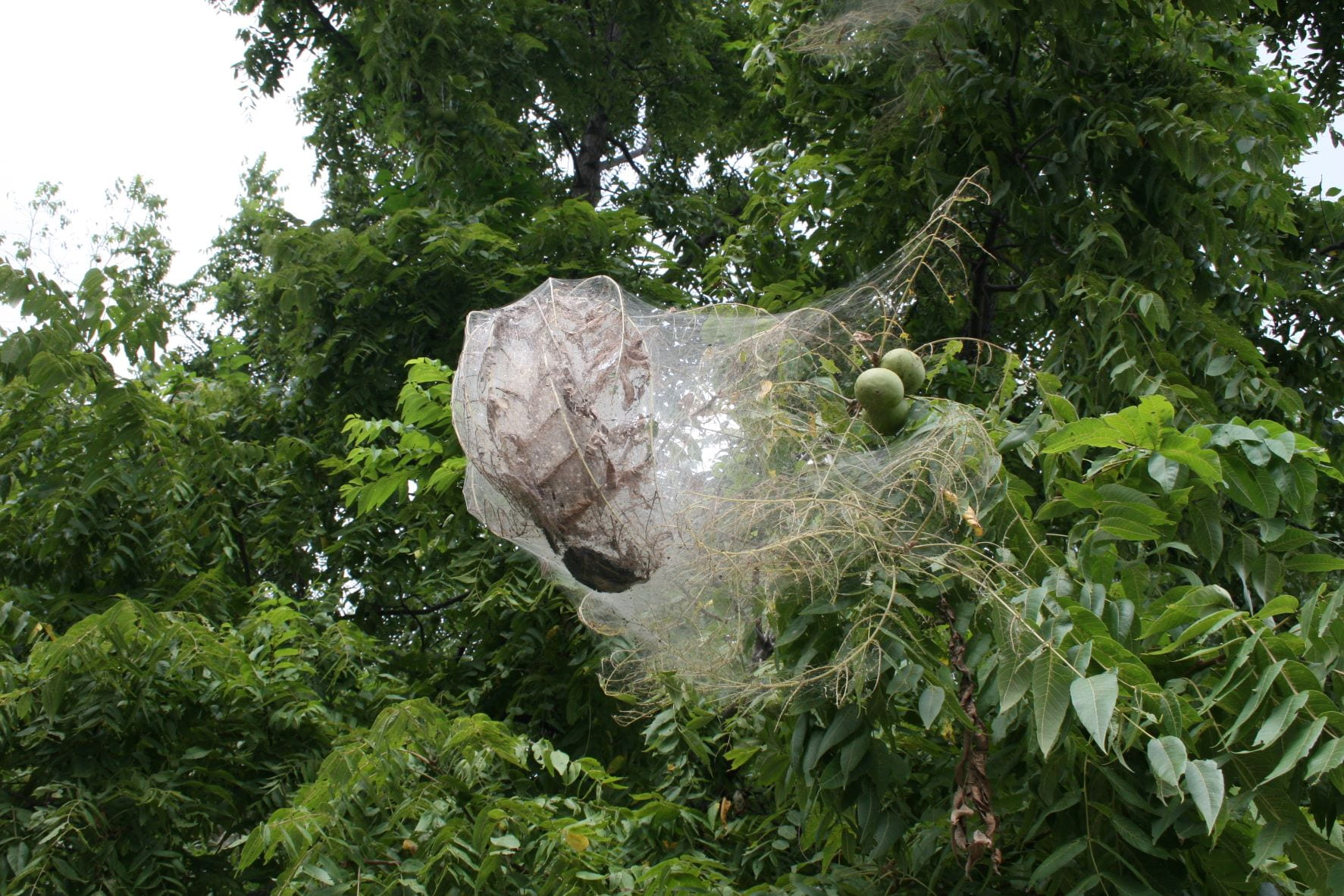–by Raymond Cloyd — Horticultural Entomology
The second generation of the fall webworm, Hyphantria cunea, is now present throughout most of Kansas with webs present on certain trees such as hickory and walnut. Fall webworm nests are noticeable, with silk webbing enclosing the ends of branches and foliage or leaves (Figures 1 and 2).

Figure 1. Fall webworm nest on walnut tree (Raymond Cloyd, KSU)

Figure 2. Fall webworm nest on birch tree (Raymond Cloyd, KSU)
Fall webworm larvae or caterpillars are pale-green, yellow to nearly white, with two black spots on each abdominal segment. Caterpillars are covered with long, white hairs (Figure 3).

Figure 3. Close-up of fall webworm larvae (Raymond Cloyd, KSU)
Fall webworm caterpillars feed on a wide range of trees, including: birch, crabapple, maples, hickory, pecan, mulberry, and walnut. Fall webworm caterpillars, unlike caterpillars associated with the eastern tent caterpillar, Malacosoma americanum, remain within the enclosed webbing and do not venture out to feed. Caterpillars consume leaves, resulting in naked branches with webbing attached, which contains fecal deposits (frass) or ‘caterpillar poop’. These nests will eventually dry-up as the caterpillars transition into pupae, with adults eventually eclosing (emerging) from the pupae later on in the growing season.
Feeding by fall webworm caterpillars at this time of year is typically not directly harmful to trees—especially larger trees. The most effective method of dealing with fall webworm infestations is to prune-out the webs that enclose the caterpillars, place into a plastic bag, and dispose of immediately. Insecticide sprays are not be effective because the caterpillars remain in the webbing while feeding; thus reducing exposure to spray residues. If insecticides need to be applied, use high-volume spray applications that penetrate the protective webbing, or use a rake to disrupt or open-up the webbing so that the insecticide spray contacts the caterpillars.